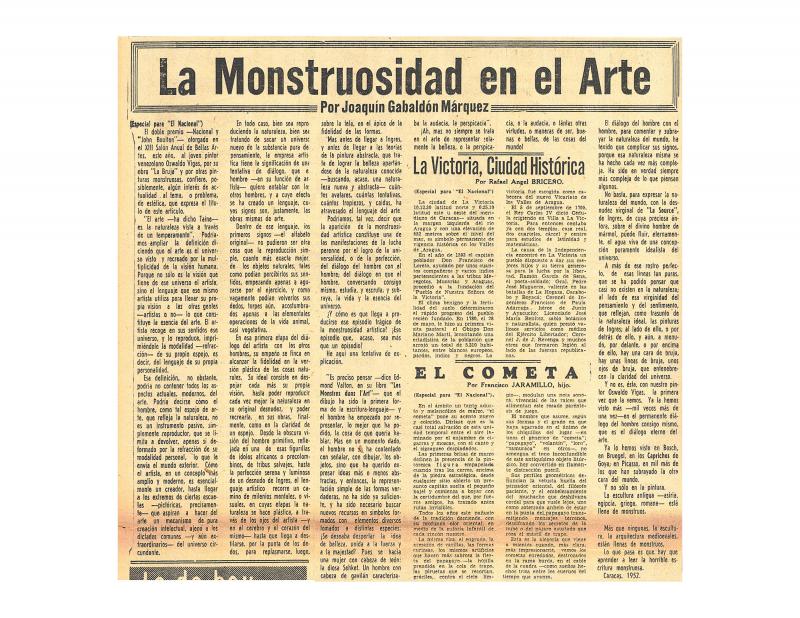The Venezuelan curator and art critic Roberto Guevara (1932–1998) expresses his mistrust of what he calls the “confusing promotion of a ‘Latin American art,’” given the strategies implemented to that end. The Latin Americanism and localist discourse that prevailed at the time would have dismissed this criticism as tangential. This “irrelevant” text was based on an analysis of the work of Oswaldo Vigas (b. 1926) and his process of artistic investigations. To Guevara, a defender of critical thinking who embraced the whole continent, artistic accomplishment was based on specific achievements, but never on causes. In 1977, Vigas had presented the exhibition Oswaldo Vigas: Imagen de una identidad expresiva (Galería del Instituto Nacional de Cultura/Museo de Arte Italiano, Lima, Peru). In that exhibition, Vigas referred to the problem of a continental language based on recycling of the past; he did so in opposition to the trends of abstraction and Informalism. That same year, Vigas stirred up controversy when he questioned official art in Venezuela as well as pointing out the dangers of exploration based on international movements. In this context, Guevara seems to question the postulates of Vigas, whom he considers the standard-bearer for a language of “identities” (purposes). Nevertheless, the critic values the artist’s dynamic creation process, tied as it is to artistic problems and specific solutions. To Guevara, Vigas’s particular contribution can be found in his formal exploration and his development of certain themes that have recurred in Latin American art, taking them to another level. In the critic’s opinion, repetition is attended by risk, but the artist recovered his earlier work as a source for exploration as well as for further development. In response to the dissemination of art that represents discourse, Guevara focuses on the creative act itself as the space of enunciation, therefore, the only possible sphere of legitimacy.
The Venezuelan writer and critic [Juan Liscano (1915–2001) also addressed this issue in his article “La reiteración de Vigas,”] published in the El Nacional supplement “Papel Literario” (Caracas, October 29, 1978). Marta Traba, in turn, in writing on a retrospective of Vigas’s painting, deemed him atypical of Venezuelan artists, using his pictorial work to question the cultural dependence of Latin America. [See ICAA digital archive doc. no. 1106962].
Regarding the work of Oswaldo Vigas, see also the text by Juan Liscano, “La reiteración de Vigas” (doc. no. 1152769), the texts by Roberto Montero Castro, “Vigas en el ojo ajeno-Plástica e identidad latinoamericana” (doc. no. 1153266) and “Oswaldo Vigas: La lucha por descubrir la identidad americana” (doc. no. 1168108); the text by Joaquin Gabaldón, “La monstruosidad en el arte” (doc. no. 850831); the articles by Lenelina Delgado, “De la pintura al tapiz” (doc. no. 1153365); and A. Feltra, “Vigas sufre de afán publicitario” (doc. no. 1155580).







